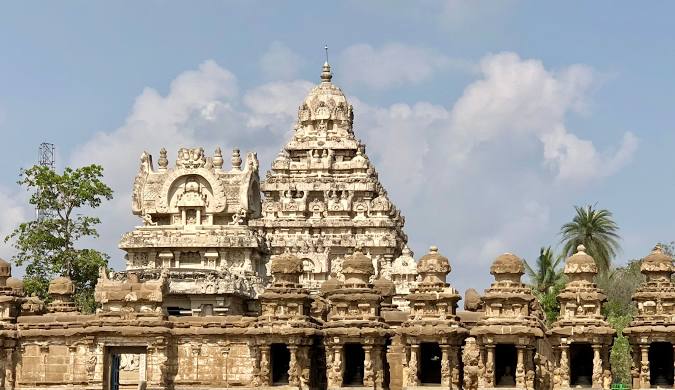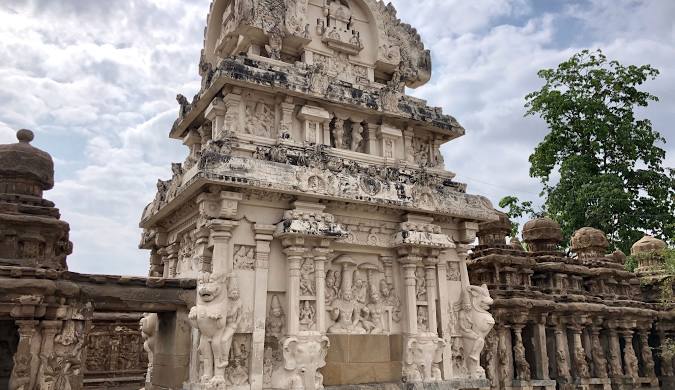The Kanchi Kailasanathar Temple, located in Kanchipuram, Tamil Nadu, is one of the oldest and most significant temples dedicated to Lord Shiva. This architectural marvel was built in the early 8th century by the Pallava dynasty under the reign of Narasimhavarman II, also known as Rajasimha Pallava.
Architectural Significance
The Kanchi Kailasanathar Temple is renowned for its Dravidian architectural style and is considered a precursor to the grand temples of the later Chola dynasty. The temple complex is constructed primarily out of sandstone and is famous for its intricate carvings and detailed sculptures. The main sanctum houses a Shiva lingam, and the temple’s walls are adorned with numerous niches containing sculptures of various deities and mythological figures.
Unique Features
One of the unique features of the temple is the series of small shrines that surround the main sanctum. These shrines are dedicated to different forms of Shiva and other gods and goddesses, creating a spiritual ambiance. The temple’s gopuram (tower) and vimana (temple tower) exhibit early Dravidian architectural elements, and the temple complex includes a courtyard, a hall of Nandi (the bull vehicle of Shiva), and a main sanctum.
Cultural and Historical Importance
The Kanchi Kailasanathar Temple holds immense historical and cultural importance. It represents the artistic and architectural advancements of the Pallava period. The temple’s sculptures and carvings depict various episodes from Hindu mythology and provide insights into the religious and cultural life of the time. It is also believed that the temple served as an inspiration for the later grand temples built by the Cholas and other South Indian dynasties.
Current Status
Today, the Kanchi Kailasanathar Temple remains an active place of worship and a popular tourist destination. Its serene atmosphere and architectural beauty attract devotees and history enthusiasts alike. The temple stands as a testament to the Pallava dynasty’s devotion to Lord Shiva and their contributions to South Indian temple architecture.


